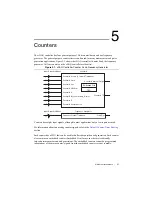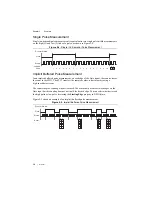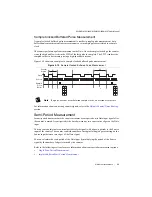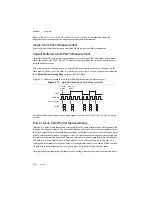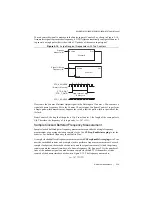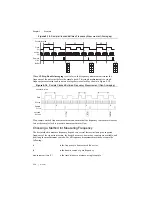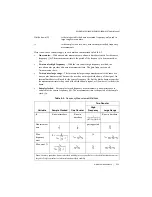
© National Instruments
|
5-13
NI cDAQ-9132/9133/9134/9135/9136/9137 User Manual
You can route the signal to measure to the Source input of Counter 0, as shown in Figure 5-14.
Assume this signal to measure has frequency
fx
. NI-DAQmx automatically configures Counter 0
to generate a single pulse that is the width of
N
periods of the source input signal.
Figure 5-14.
Large Range of Frequencies with Two Counters
Next, route the Counter 0 Internal Output signal to the Gate input of Counter 1. You can route a
signal of known frequency (
fk
) to the Counter 1 Source input. Configure Counter 1 to perform
a single pulse-width measurement. Suppose the result is that the pulse width is
J
periods of the
fk
clock.
From Counter 0, the length of the pulse is
N
/
fx
. From Counter 1, the length of the same pulse is
J
/
fk
. Therefore, the frequency of
fx
is given by
fx
=
fk
* (
N
/
J
).
Sample Clocked Buffered Frequency Measurement
Sample clocked buffered point frequency measurements can either be a single frequency
measurement or an average between sample clocks. Use
CI.Freq.EnableAveraging
to set the
behavior. For buffered frequency, the default is True.
A sample clocked buffered frequency measurement with
CI.Freq.EnableAveraging
set to True
uses the embedded counter and a sample clock to perform a frequency measurement. For each
sample clock period, the embedded counter counts the signal to measure (
fx
) and the primary
counter counts the internal time-base of a known frequency (
fk
). Suppose T1 is the number of
ticks of the unknown signal counted between sample clocks and T2 is the number of ticks
counted of the known timebase as shown in Figure 5-15. The frequency measured is:
fx
=
fk
* (T1/T2)
S
o
u
rce
O
u
t
Co
u
nter 0
S
o
u
rce
G
a
te
O
u
t
Co
u
nter 1
S
ign
a
l to
Me
asu
re (
fx
)
S
ign
a
l of Known
Fre
qu
ency (
fk
)
CTR_0_
S
OURCE
(
S
ign
a
l to Me
asu
re)
CTR_0_OUT
(CTR_1_GATE)
CTR_1_
S
OURCE
Interv
a
l
to Me
asu
re
0
1
2
3
…
N



